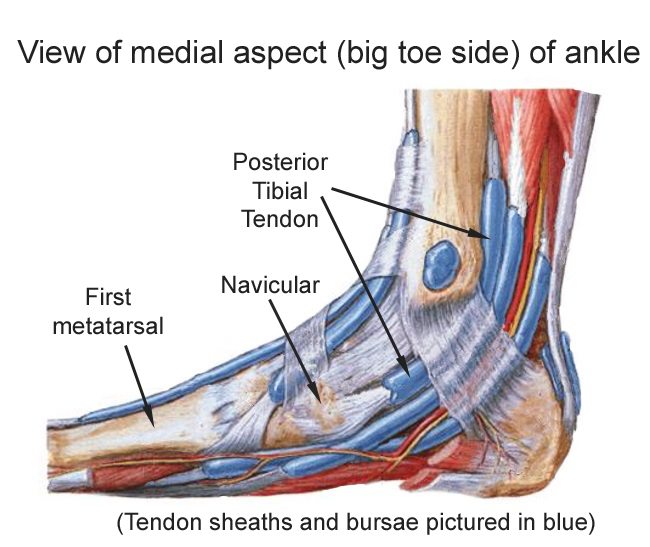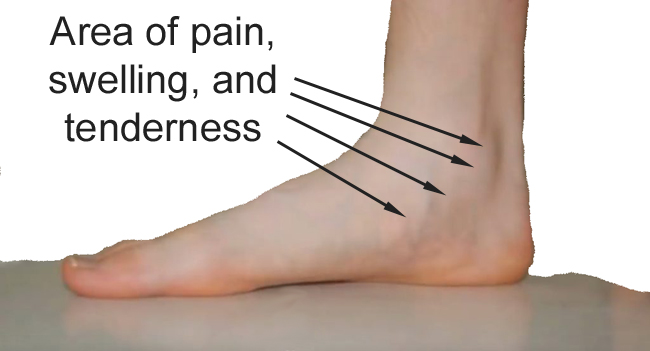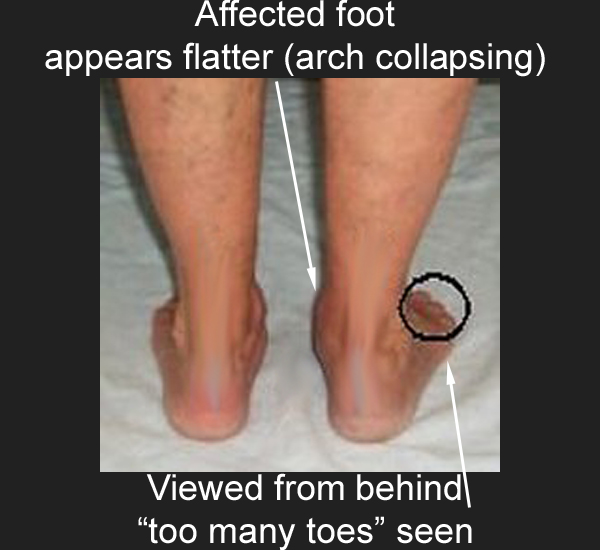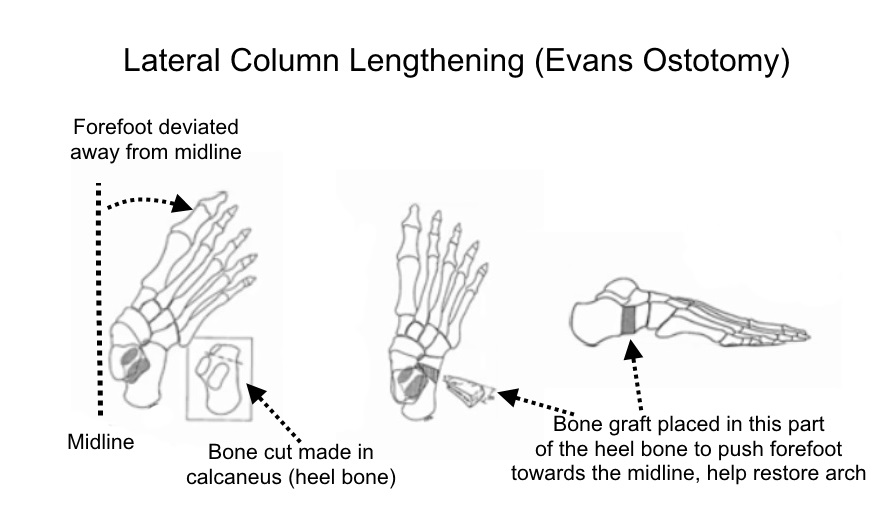Posterior Tibial Tendonitis/Dysfunction
Of the tendons that support the position of the foot on the end of the leg, one of the tendons, the posterior tibial tendon, can get frayed, become inflamed, and be a source of pain.
The posterior tibial tendon, which is on the medial (big toe side) of the ankle, goes just behind the ankle bone changing direction almost 90 degrees to come from the leg and insert in a midfoot bone called the navicular. This tendon helps invert the ankle (turn the sole of the foot towards the midline). In this area behind the ankle bone, there is a region of relatively poor circulation to the tendon tissues, so if there is a partial tear, the healing process cannot keep up with the continued stress of walking on the leg.


In some patients, and more commonly in women who are a little overweight, and usually in the 40-60 year age group, the tendon fraying will cause inflammation, with the clinical characteristics of warmth, swelling, redness, and pain. This inflammation is usually what gets the attention of the patient, as in most cases there is no acute injury.
Once the tendon gets inflamed, it can go through varying levels of dysfunction.
Initially there is pain, but as time goes on, the arch collapses (foot can become flatter).

Treatment:
Non operative:
--Mechanical support (walker boot, or brace, AFO) that extends to just below the knee (a short boot just above the ankle won't work), anti inflammatory medications, and activity modification.
Operative:
--Motion sparing: tendon debridement/repair, tendon transfers, sometimes associated with bone cutting aspects to realign the hindfoot.
--Bone fusion: the hindfoot (the part that does the inversion and eversion) can be stabilized with an operation called fusion, where the bones have the cartilage remove and are held in place with screws so the bones will grow together. There is more stability and less pain, but at the price of lost inversion/eversion motion of the hindfoot.

One example of a surgery that helps restore the arch, make the foot less flat, and preserves motion is a Lateral Column Lengthening, also called an Evans Osteotomy.
As part of the flatfoot deformity, the forefoot is moved away from the midline. The surgery depicted here helps not only move the forefoot towards the midline, but it preserves motion. This surgery is also combined with a tendon transfer to tighten up the inner/big toe side of the foot.
